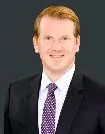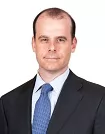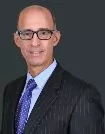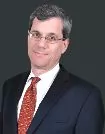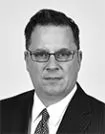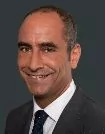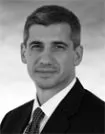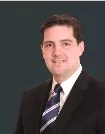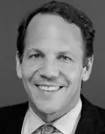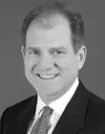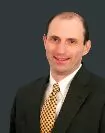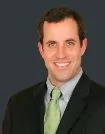In so-called "price maintenance" securities fraud cases, plaintiffs argue that a misrepresentation that does not cause a stock's price to rise can nevertheless be actionable under Section 10(b) of the Securities Exchange of 1934 ("Exchange Act") on the theory that the misrepresentation prevented a stock's artificially-inflated price from falling. The Seventh and Eleventh Circuits have accepted price maintenance as a cognizable theory of liability under the Exchange Act.1 However, in IBEW Local 98 Pension Fund v. Best Buy Co., the Eighth Circuit, at least in the view of Judge Murphy in dissent, effectively rejected price maintenance as a cognizable theory under the Exchange Act when it held that a defendant had rebutted the fraud-on-the-market presumption of reliance by showing a lack of price impact pursuant to the US Supreme Court's decision in Halliburton II.2 On the same day that Best Buy was decided, the US Court of Appeals for the Second Circuit, in In re Pfizer Inc. Securities Litigation, discussed the theory, but noted that the Second Circuit had not and was not in Pfizer endorsing the theory.3
In In re Vivendi, S.A. Securities Litigation, No. 15-180 (2d Cir. Sept. 27, 2016), the Second Circuit agreed with the Seventh and Eleventh Circuits and endorsed price maintenance as a cognizable theory of securities fraud liability. The Vivendi Court accordingly rejected the argument that an alleged misstatement must be associated with an increase in artificial inflation to have an actionable "price impact." Rather, the Court held, an alleged misstatement can affect the market price of a stock by maintaining already-existing inflation. Thus, a securities fraud defendant cannot avoid liability for an alleged misstatement merely because the misstatement is not associated with an increase in the stock's price, regardless whether the preexisting inflation was the result of the defendant's fraud. However, because Vivendi did not address the propriety of class certification and did not discuss Best Buy, it remains to be seen whether the Second Circuit will view the Vivendi decision as effectively foreclosing an argument that lack of price impact can defeat class certification in the face of evidence that the prior inflation was "maintained" by the alleged misrepresentation or omission.
Background
Vivendi was an appeal from a jury verdict finding Vivendi Universal, S.A. ("Vivendi") liable for securities fraud under Section 10(b) and Rule 10b-5. The class plaintiffs were investors in Vivendi's stock between October 30, 2000 and August 14, 2002. They alleged that during this period, the defendants (Vivendi, its CEO and its CFO) made 57 material misstatements on the subject of Vivendi's "liquidity risk" — i.e., its ability to timely meet its financial obligations and fund its operations — in connection with and resulting from the company's various acquisitions and related efforts to transition from a utilities conglomerate into a global media powerhouse. The jury found that neither the CEO nor the CFO was liable for the alleged misstatements, but found Vivendi liable under Section 10(b) for all 57 alleged misstatements. The district court awarded Vivendi judgment as a matter of law with respect to one statement (a determination not appealed by plaintiffs), but otherwise denied Vivendi's motion for judgment as a matter of law and for a new trial.4
The Vivendi Decision
On appeal, Vivendi argued, among other things, that the district court abused its discretion in admitting the testimony of plaintiffs' expert, Dr. Blaine Nye, on damages and loss causation. Nye had performed a standard event study to determine whether, and the extent to which, Vivendi's stock price was artificially inflated during the class period due to the market's misapprehension of the company's true liquidity risk.5 However, Nye's analysis did not purport to prove that that misapprehension was caused by Vivendi's alleged fraud and did not assume that the inflation was due to misrepresentations. As the Court explained, "[a]rtificial inflation is not necessarily fraud-induced, for a falsehood can exist in the market (and thereby cause artificial inflation) for reasons unrelated to fraudulent conduct."6
Because Nye did not determine the amount of artificial inflation in reference to whether that inflation was due to Vivendi's alleged misstatements, his testimony did not exhibit any obvious correlation between the inflation increases he identified and the timing of the challenged statements. Indeed, 42 of the challenged statements were not associated with an immediate increase in the price inflation calculated by Nye's model. Vivendi argued that this lack of correlation rendered Nye's testimony unreliable because, as to those 42 statements, there was no "price impact," meaning that those statements could not be actionable under the securities laws. Rather, Vivendi argued, Nye's testimony necessarily rested on an impermissible "inflation maintenance" theory — i.e., that statements that merely maintain already extant inflation nonetheless affect a company's stock price.7
The Second Circuit rejected Vivendi's argument that a statement must be associated with an increase in inflation to be actionable. The Vivendi Court explained that "price impact," as relevant to the transaction causation or reliance inquiry, simply concerns whether the alleged misrepresentation "'affected the market price.'"8 Moreover, the Court reasoned, Vivendi's contention that statements that merely maintain inflation have no such effect rested on two "problematic" premises: that the inflation would have remained if Vivendi had simply remained silent; and that Vivendi had the option of remaining silent even though it in fact chose to speak.9
As to the first point, the Court noted that preexisting inflation could remain unchanged in the face of silence, but it might not. However, where, as here, the defendant does not remain silent, it cannot be known whether the inflation would have remained unchanged in the face of silence. And because the Court viewed Vivendi's premise that inflation would have continued in the face of silence as dubious (believing that the truth likely would have eventually come out on its own if no longer hidden by a misstatement's perpetuation of the market's misconception), it determined that it was "far more coherent" to conclude that a material misstatement in the context of preexisting inflation "does not simply maintain the inflation, but indeed 'prevents [the] preexisting inflation in a stock price from dissipating.'"10
Second, the Court questioned whether it was even relevant what would have happened had Vivendi chosen not to speak. It is "well-established," the Court explained, that once a company speaks on an issue or topic, it has a duty to tell the whole truth, even if there is no existing independent duty to disclose information on the issue or topic.11 Thus, "once a company chooses to speak, the proper question for purposes of our inquiry into price impact is not what might have happened had a company remained silent, but what would have happened if it had spoken truthfully."12
Having dispelled with what it determined were the "erroneous principles" upon which Vivendi's argument rested, the Court concluded that "it is hardly illogical or inconsistent with precedent to find that a statement may cause inflation not simply by adding it to a stock, but by maintaining it."13 Were that not so, the Court continued, "companies could eschew securities-fraud liability whenever they actively perpetuate (i.e., [through] affirmative misstatements) inflation that is already extant in their stock price, as long as they cannot be found liable for whatever originally introduced the inflation."14 "'We decline to erect a per se rule that, once a market is already misinformed about a particular truth, corporations are free to knowingly and intentionally reinforce material misconceptions by repeating falsehoods with impunity."15 Thus, the Court rejected Vivendi's argument that "the 'price impact' requirement inherent in the reliance element of a private § 10(b) action means that an alleged misstatement must be associated with an increase in inflation to have any effect on a company's stock price."16
The Significance of Vivendi
The Second Circuit currently has before it challenges to class certification orders in securities class actions presenting "price maintenance" theories. In those cases, arguments that, under Halliburton II, the fraud-on-the- market presumption of reliance had been rebutted by showing that the alleged misrepresentations had not had any "price impact" were unsuccessful in the district court. However, the Eighth Circuit's Best Buy decision, reversing a class certification order on the basis that the presumption of reliance had been rebutted under Halliburton II, presented Circuit Court authority in support of such a position. The Vivendi appeal did not concern a class certification order, and the opinion did not discuss the Eighth Circuit's Best Buy decision. Thus, although Vivendi's analysis is potentially adverse to such an argument, it remains to be seen whether the Second Circuit will apply Vivendi to the class certification context and treat the decision as having effectively rejected the analysis and holding of Best Buy.
Footnotes
1 See Glickenhaus & Co. v. Household Int'l, Inc., 787 F.3d 408, 419 (7th Cir. 2015); FindWhat Inv'r Grp. v. FindWhat.com, 658 F.3d 1282, 1314 (11th Cir. 2011).
2 See 818 F.3d 775, 784 (8th Cir. 2016) (Murphy, J., dissenting); Halliburton Co. v. Erica P. John Fund, Inc., 134 S. Ct. 2398, 2410 (2014) ("Halliburton II") (holding that defendants have the right to rebut the fraud-on-the-market presumption of reliance by providing evidence showing the alleged misrepresentations did not actually affect the stock price); see also Eighth Circuit Holds Presumption Of Reliance Rebutted Under Halliburton II And Reverses Class Certification In Securities Action
3 See 819 F.3d 642 (2d Cir. 2016); see also Second Circuit Stresses Control, Not Attribution, In Applying Janus's "Ultimate Authority" Test, And Also Allows Expert Testimony In Support Of An "Inflation-Maintenance" Theory Of Liability
4 See In re Vivendi Universal, S.A. Secs. Litig., 765 F. Supp. 2d 512, 545 (S.D.N.Y. 2011).
5 Vivendi, slip op. at 59-62.
6 Id. at 66.
7 Id. at 67-68.
8 Vivendi, slip op. at 69 (quoting Erica P. John Fund, Inc. v. Halliburton Co., 563 U.S. 805, 814 (2011) ("Halliburton I")).
9 Vivendi, slip op. at 70.
10 Vivendi, slip op. at 71 (quoting FindWhat, 658 F.3d at 1317).
11 Vivendi, slip op. at 72.
12 Id. at 73
13 Id.
14 Id.
15 Vivendi, slip op. at 75 (quoting FindWhat, 658 F.3d at 1317).
16 Vivendi, slip op. at 78. The Court also questioned how, even if it were valid, Vivendi's price impact argument would suggest that the district court abused its discretion in admitting Nye's testimony. The Court explained that Nye's model measured "actual inflation" due to investors not knowing the truth about Vivendi's liquidity risk (as opposed to "fraud-induced inflation," i.e., the difference between the stock price and what the price would have been if the defendants had spoken truthfully). His testimony was thus relevant to loss causation because the total amount of actual inflation he identified was the maximum amount of loss potentially caused by Vivendi's alleged misstatements, and was also relevant to damages because his model provided a means for calculating each plaintiff's damages. At most, Vivendi's price impact argument, if successful, would imply that plaintiffs could not establish reliance with respect to some of the relevant misstatements, but that would not render Nye's testimony wholly irrelevant to loss causation or damages or render his calculation of artificial inflation unreliable. See id. at 76-78.
The content of this article is intended to provide a general guide to the subject matter. Specialist advice should be sought about your specific circumstances.



